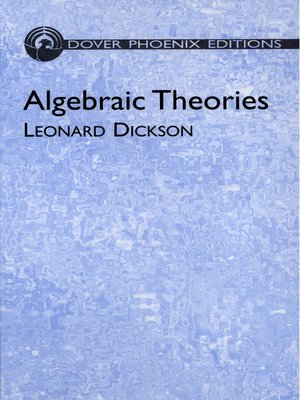
Sign up to save your library
With an OverDrive account, you can save your favorite libraries for at-a-glance information about availability. Find out more about OverDrive accounts.
Find this title in Libby, the library reading app by OverDrive.



Search for a digital library with this title
Title found at these libraries:
| Library Name | Distance |
|---|---|
| Loading... |
This in-depth introduction to classical topics in higher algebra provides rigorous, detailed proofs for its explorations of some of mathematics' most significant concepts, including matrices, invariants, and groups. Algebraic Theories studies all of the important theories; its extensive offerings range from the foundations of higher algebra and the Galois theory of algebraic equations to finite linear groups (including Klein's "icosahedron" and the theory of equations of the fifth degree) and algebraic invariants. The full treatment includes matrices, linear transformations, elementary divisors and invariant factors, and quadratic, bilinear, and Hermitian forms, both singly and in pairs. The results are classical, with due attention to issues of rationality. Elementary divisors and invariant factors receive simple, natural introductions in connection with the classical form and a rational, canonical form of linear transformations. All topics are developed with a remarkable lucidity and discussed in close connection with their most frequent mathematical applications.







